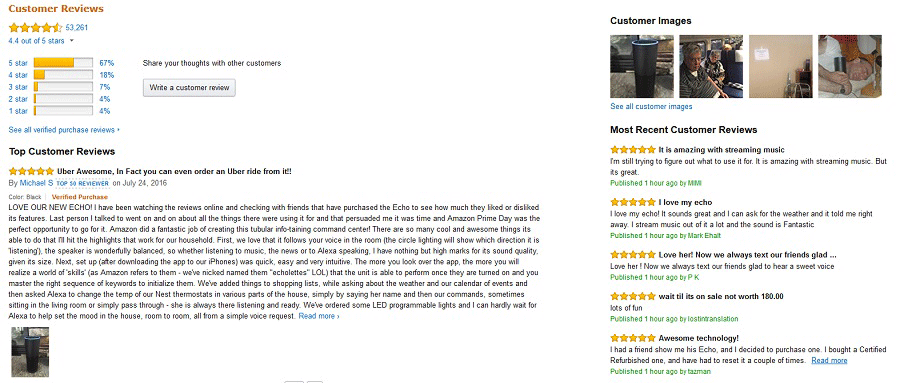Understanding the Value of Social Media for Digital Marketing and eCommerce
The Internet, with its advancement and reach, has ‘virtually’ blurred borders and boundaries and truly given way to the emergence of a world where ‘impossible is nothing’. As Microsoft founder Bill Gates very aptly points out, “The Internet is becoming the town square for the global village of tomorrow.” Since its inception in its journey till date, you will hardly ever find a single aspect in the entire world that has remained untouched by the worldwide web.

Right from the cradle to the grave – be it buying baby products and toys on websites like FirstCry or contacting undertakers on Indian Funeral Service – the Internet has opened up unimaginable vistas for business and communication. No surprise that sellers delve into devising lucrative deals for online shoppers. You must admit that it is hard to resist the temptation of making a purchase on seeing the "50% off" tag.
The general accessibility of the Internet has given individuals an opportunity to use social media platforms like Twitter and Facebook, send private correspondence via emails etc. which enable interaction without the need to meet face-to-face. With the rise of social media platforms, users can access information much easier than ever before. A single post can reach out to thousands of Internet users with just a click of a button. Download our free eBooks about Instagram, Pinterest and Twitter marketing.
Social Media Mistakes and How to Avoid Them
Social Networking Sites and Online communities take center stage in eCommerce. Moreover, the presence of any brand or business on social media platforms provides for an effective consumer interaction and better engagement. It’s generally considered that customer involvement through social media is vital for the marketing of any business. Stats show that 88% of marketers believe social media marketing is important, whereas 75% of consumers say that social media affects their buying decision.

The crux of the matter is the way how social media and digital marketing influence user behavior. In the light of the changing realities of the current business environment, understanding how social media works and how it shapes a buyer purchasing decision is of utmost importance for any online business.
Social Commerce
Social media has a unique way of showing up things that you are surfing on the Internet. For example, a user has shown interest in purchasing a t-shirt from the eCommerce website bewakoof.com. As soon as he/she goes to Facebook, the advertisements of the brand Bewakoof will show up. That is because Bewakoof has a social media existence. Each and every step that a consumer takes online is being tracked. Social media is intended to work in such a way that it responds to consumers “likes” and “wants”. If there are no matches to the related products or services that a person was searching for, such ads will appear to simply induce a customer to take a look at a set of offerings.
In such a way, social media provides businesses with an opportunity to become more attractive universally. Social media and eCommerce have somehow led to the evolution of Social Commerce. Facebook and Twitter have now become the best platforms for social interactions between consumers and online shops. People can now have a direct access to a brand or business, which eventually instills trust in the consumer. Hands down, trust is the most important factor, if a consumer has to go online and make a purchase. It heavily influences customer buying intentions.

eCommerce has now become more customer-centric, especially the B2C model. And since the traditional touch and feel concept cannot be applied, the trust factor plays a major role. The success of an e-business largely depends on loyal customers. Consumers can always find another service provider on the web. Therefore, maintaining good customer relations is vital, especially considering the fact that there is no face-to-face interaction with the web shoppers.
However, many consumers (especially those who have been brought up on traditional means of purchasing) are extremely skeptical about buying online. This is when user testimonials shared on the official pages of online retailers will come in handy.
Power of Customer Testimonials
Genuine customer insights or reviews are available on most shopping sites. These serve as an invaluable resource in making a positive purchasing decision. User reviews are especially useful when one and the same site offers multiple sellers of the same product; if the site is a multiple/varied products shopping site and not a dedicated company web project. A research states that a potential consumer is more likely to purchase a product recommended by other users rather than rely on seller generated product information. Hence, social media interactions help build the trust and kill the perceived risk. As Steve Jobs once stated, “Get closer than ever to your customers. So close that you tell them what they need well before they realize it themselves”.

In fact, eCommerce websites such as the Flipkart and Amazon have successfully integrated product reviews, such as Oberlo review, recommendations, seller information, etc. to build trust with online shoppers. According to the study of Chang, et al. (2004), consumer behavior falls into three major categories:
- The first one is perceived characteristics of the web sale channel, which include risk, advantage, online shopping experience, service quality, trust.
- The second category covers the website and product characteristics, which are risk reduction measures, website features, and product characteristics.
- And the last category is consumer characteristics. Consumer characteristics are driven by various types of features, consumer shopping orientations, demographic variables, computer, internet knowledge and usage, consumer innovativeness and psychological variables.
Today, social media focuses on the ease at which a customer can share and access the content or information they enjoy. Individuals use third party applications (like HootSuite and Buffer) to share content across social sites. These tools enable a user to share a specific content on multiple social media sites simultaneously. Additionally, customers use various social media tools (like online forums and communities, groups, reviews and ratings) to interact with fellow shoppers. As a matter of fact, new customers use these tools before actually placing an order. From a business perspective, these things prove to be vital and help generate leads and conversions.
The emergence of reviews on social media is one of the key factors that have strengthened the eCommerce sector. Buyer reviews are largely available on product pages, which define the product accurately and give a human touch to them. It also creates a great value for both the customers and the business. In fact, businesses actively encourage customers to rate their products and leave honest reviews. Negative feedback is taken seriously and dealt with immediately. Such activities are interestingly termed ‘electronic word of mouth’. Such kind of activities in social media helps consumers make the right purchasing decision.

Business2community states that “90% of the consumers read online reviews and 88% of them trust the online reviews, as much as personal recommendations. In other words, more people read reviews as a part of their pre-purchase research before buying a product or service.” It also adds that “Customers are likely to spend 31% more on a business with excellent reviews. 72% say that positive reviews make them trust a local business more. 92% users will use a local business if it has a 4-star rating”. A very interesting fact that we need to take into consideration is that 32% users (which is a fairly high figure) go through 4-6 reviews before placing an order or trusting a business. If positive reviews are a boon, negative reviews are equally disastrous, “86% of people will hesitate to purchase from a business with negative online reviews”.
A very interesting fact that we need to take into consideration is that 32% users (which is a fairly high figure) go through 4-6 reviews before placing an order or trusting a business. If positive reviews are a boon, negative reviews are equally disastrous, “86% of people will hesitate to purchase from a business with negative online reviews”.
Final Thoughts
Customer satisfaction is by far the most important aspect when it comes to online shopping. It leads to customer loyalty and retention. The only threat that the customers are worried about is the security of their transaction and data, which is another crucial factor in determining consumer behavior. There is no doubt that people in India are still facing a tough time accepting online transactions, in case they have the wherewithal to make them. This fends off many of the potential customers who want to buy stuff online. However, they cannot do this due to the lack of trust in online transactions and the lack of actual knowledge. Of course, the cash on the delivery model has come to the rescue, but online transactions are still a matter of great concern.
In addition to the online businesses, the Government should also ensure that the customers are not being cheated in terms of faulty or defective products, for which the Consumer Forum is anyway available. There is no doubt a big role that social media has to play in eCommerce and it largely influences the behavior of the consumer. And believe it or not it is here to stay.

Get more to your email
Subscribe to our newsletter and access exclusive content and offers available only to MonsterPost subscribers.





Leave a Reply
You must be logged in to post a comment.